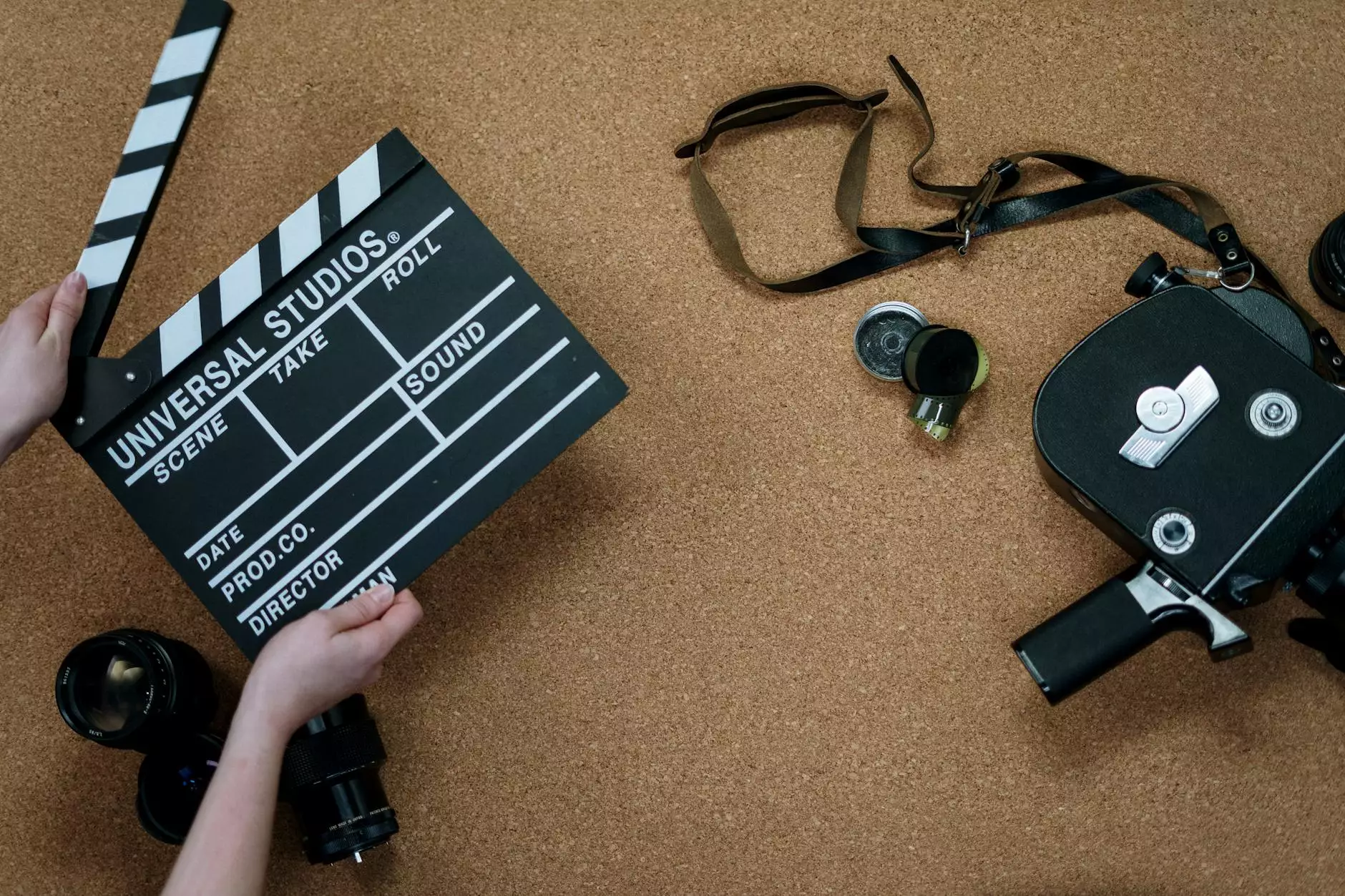The Essential Guide to a Successful Film Production Crew

Film production is a complex and multifaceted industry that requires meticulous planning, teamwork, and creativity. Whether it's a major blockbuster or an indie film, a talented film production crew is essential to bringing a vision to life. In this comprehensive guide, we will explore the crucial roles that make up a film production crew, their responsibilities, and tips on how to assemble the best team for your project.
Understanding the Film Production Crew Structure
The backbone of any successful production lies in the organization of its crew. The crew is typically divided into various departments, each responsible for specific aspects of the film-making process. Let’s break down these departments and their key roles:
The Direction Department
The direction department is pivotal to the film production process. Here, we have:
- Director: The creative visionary responsible for the film's overall direction.
- Assistant Director (AD): A crucial role that aids the director in managing the shooting schedule and coordinating the cast and crew.
- Script Supervisor: Keeps track of the script to ensure continuity and accuracy throughout filming.
The Production Department
The production department is responsible for the logistics and administration of the film shoot. Key roles include:
- Producer: Oversees funding, scheduling, and the overall production process.
- Production Manager: Manages the budget and ensures the production stays on track.
- Line Producer: Works closely with the production manager and is responsible for the day-to-day physical aspects of the production.
The Cinematography Department
Cinematography is the art of visual storytelling. The crew in this department typically includes:
- Director of Photography (DP): Responsible for the look and feel of the film, including lighting and camera operation.
- Camera Operators: Manage the camera and work with the DP to capture the footage.
- Gaffer: Handles lighting setups to create the desired visual atmosphere.
The Art Department
The art department is essential in creating the visual elements that define your film’s world. Key positions include:
- Production Designer: Responsible for the overall visual concept, including sets, locations, graphics, props, and costumes.
- Set Decorator: Curates the objects and stylistic choices that adorn set environments.
- Props Master: Finds, organizes, and manages all props to be used during filming.
The Sound Department
No film is complete without sound design. The sound department typically consists of:
- Sound Mixer: Balances audio levels in real-time to capture clean sound during filming.
- Sound Designer: Creates the auditory elements, including sound effects and ambience.
- Boom Operator: Works closely with the sound mixer to capture sounds from the right angles without being seen on camera.
The Importance of Each Role in the Film Production Crew
Every film production crew member plays a crucial role in the filmmaking process. The interaction and collaboration between different departments are what allow for creative ideas to be translated into visual narratives. Here’s how each role contributes to a successful production:
Creating a Cohesive Vision
The director needs to effectively communicate their vision to the entire crew. This alignment ensures that every department is working towards the same end goal, which is pivotal for maintaining continuity throughout the film.
Managing Resources Efficiently
Production managers and line producers are essential in making sure that resources—whether they're financial, human, or material—are utilized efficiently. They schedule shooting days to make the most out of available time and money.
Technical Execution
Technical roles such as the director of photography and sound mixer are vital for crafting the film's aesthetic. Their expertise ensures that both visual and auditory elements meet professional standards and reflect the director's vision.
How to Assemble the Best Film Production Crew
Building a strong film production crew takes time, careful consideration, and extensive networking. Here are some steps and tips to help you assemble the best team for your project:
Define Your Project’s Needs
Before you start recruiting, understand the specific needs of your project. Based on your script and budget, determine which roles are absolutely essential, and which can be filled with freelancers or part-time employees.
Network Within the Industry
Many talented professionals in the film industry may not be visible online. Attend film festivals, industry events, and workshops to meet potential crew members. Engaging in online communities, forums, and platforms like LinkedIn can also yield potential connections.
Check Portfolios and Previous Work
When evaluating potential crew members, reviewing their past work is crucial. Portfolios provide insights into their experience, style, and professionalism. Be sure to ask for references and check reviews from previous collaborators.
Conduct Thorough Interviews
Always conduct detailed interviews with potential crew members. This will help you gauge their communication skills, enthusiasm, and ability to collaborate with others. Ask questions about how they overcome challenges on set, and what they think about the projects they've worked on.
Importance of Communication and Collaboration
The success of a film largely depends on how well a crew works together. Excellent communication fosters a collaborative environment where ideas can flourish and problems can be solved swiftly. Encourage open lines of dialogue among crew members and ensure everyone feels comfortable sharing their thoughts.
Use tools like project management software and group messaging apps to keep everyone informed. Regular meetings are also vital, as they offer an opportunity to address any potential issues and align on the project’s vision.
Conclusion: The Heart of Film Production
In conclusion, the film production crew is the lifeblood of any successful film project. Each role, from the director to the production assistants, plays a distinct yet interdependent part in transforming a script into a cinematic masterpiece. Investing time in assembling a skilled and cohesive crew will ultimately contribute to a smoother production process and, ultimately, a better film. Remember to prioritize communication, clearly define roles, and cultivate a creative environment where all members feel valued.
As you embark on your film-making journey, remember that it’s not just about the individual talent of each crew member but how well they can work together to achieve a shared vision. Whether you're just starting out or looking to expand your established crew, understanding the nuances of each role is essential. With the right film production crew in place, your film can reach new heights of creativity and success.









